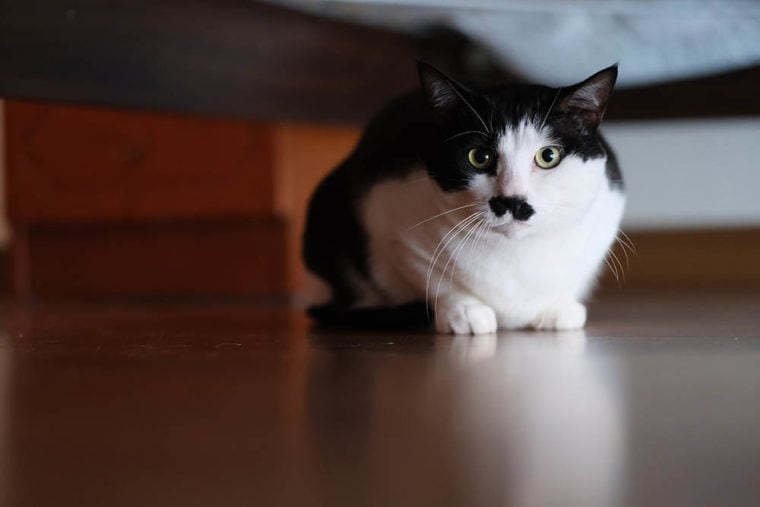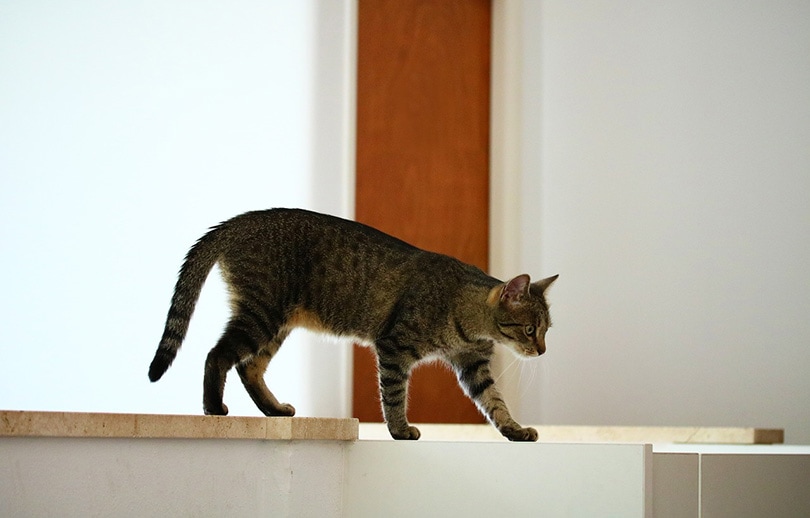
Moving into a new home is both exciting and stressful, especially if you have a cat. Cats do not accept change very well and are creatures of habit. However, cats’ personalities vary, and because of this, your cat may react differently than you’d expect. In the end, it really depends on your cat’s personality and age of how long it will take your cat to adjust to a new home. It could take as little as a week, or it may take several weeks.
In this article, we’ll look into this topic in an attempt to decipher a timeframe, along with useful tips to make the transition as smooth as possible.
 How Long Will It Take My Cat to Adjust to Our New Home?
How Long Will It Take My Cat to Adjust to Our New Home?
Cats march to the tune of their own drum, and they are not shy in letting you know they are unhappy about something, including moving to a new house. Your cat may soil your bed, not eat, or hide. Moving to a new home can cause anxiety for your cat, resulting in “acting out” behavior.
As far as a timeframe, for adult cats 1 year and up, it may take up to a week to get acclimated. For kittens, it can be as short as 2–3 days. For senior cats, it can take several weeks to adapt. The general rule of thumb is that the older your cat, the longer it may take for total acclimation.

What Signs to Look for in My Cat’s Behavior
If you notice any of these behaviors, it may be a sign that your cat is stressed in his or her new environment or has an underlying medical problem.
How Can I Prepare My Cat for the Move?
Now that we’ve established the stress level for cats during a move, let’s look at things you can do to make the transition as smooth as you can for your feline fur baby.
One thing you can do is to make a safe haven or safe place for your cat in the new home. Place a litter box in one of the new rooms, along with toys, your cat’s condo (if it has one), a scratching post, food, water, and any other items your pet usually calls its own. Familiar items will hopefully calm your cat, even if those items are not in your old home any longer.
You can also bring any blankets your cat likes to lay on from the old home. This method will still have your old home’s scent, and it may soothe your cat. You can place a cat carrier in the room, but don’t close your cat up in the carrier; let your cat come and go in and out of the carrier as it pleases.
When picking a room in the new home for your cat, ensure it’s safe and that there are no ways your cat can escape. Ensure no drafts are present, as cats do not like to be cold. One more thing: try to keep the environment as calm as possible while moving in and afterward to help your cat even further with the transition.
It’s important to maintain the normal routine you had in your previous house to help your cat stay familiar with certain everyday things.

How Can I Tell if My Cat Is Adjusting to the New Home?
A surefire way to tell your cat is acclimating is if it starts to explore its new surroundings. Another way to tell is if your cat is eating normally and not hissing or meowing all the time.
Cats like to rub their scent on things, including their owners, and if you notice your cat rubbing on an object within the new home (or your leg), your cat is getting comfortable. Cats like to familiarize objects with their own scent, as this puts them at ease.
Playing is another way to tell that your cat is acclimating. This means your cat is comfortable in its new surroundings. A cat won’t play if stressed.
Regular litter box usage is another way to tell your cat is comfortable. As we’ve mentioned, anxiety in cats can cause destructive behavior, such as going potty outside the litter box.
When to Call Your Vet
You know your cat the best, and if several weeks have gone by and your cat is still not acting itself, not eating right, or grooming excessively, a trip to the vet may be warranted. Your vet may be able to provide medication to further help with the transition.
There are other techniques you can try, such as a calming collar, a calming pheromone diffuser, and calming treats and supplements.
 Conclusion
Conclusion
Cats are territorial animals, and they don’t like change, but that doesn’t mean it’s impossible to acclimate your cat to your new home. It takes a little patience on your end, and you must be willing to go the extra mile to make your cat comfortable, such as picking a designated room for your cat, placing familiar items in the rooms, etc. With a little time, your cat will be acclimated to the new home in no time.
Featured Image Credit: Robert Way, Shutterstock

 How Long Will It Take My Cat to Adjust to Our New Home?
How Long Will It Take My Cat to Adjust to Our New Home?



